Text and photos by Anna Karina Johansen, JMMDS
Meandering through Madoo Conservancy‘s intimate, magical gardens, I felt the mischievous gardener side of me awaken. The garden is not perfect; it is as clever and fun as its stairway to nowhere, and that’s why I love it.
Most famous gardens in the Hamptons are private. Fortunately, I sat next to Frances Schultz, journalist and outdoor enthusiast, at a lobster dinner (my sister, Marta Johansen, had a show of her drawings in South Hampton) and she told me that I “just had to go to Madoo!” Upon arrival, expecting privet hedges and rose parterres (which would not have been bad) and a parking lot and tourists (which would have been), I found the opposite. Abandoning the vehicle in a driveway, ducking through trees onto the pounded riverstone paths, I wound through this maze of horticultural delights and serendipity, discovering Robert Dash’s treasure.
L: A garden in my scale with Schizophragma hydrangeoides. R: The ginkgo and boxwood walk, dappled.
Brightly colored doors and structures beckon investigation and exploration through a series of light and dark chapters of his imagination and one’s own. Influences range from Oriental to High Renaissance, Tudor to early Greek and their juxtaposition relaxed my sensibilities as I wondered about the story behind each piece of art, plant selection, and folly. The loo was situated in a cabin that looked like a cabin from the civil war. Was it? Purposely not researching the garden ahead of time, bringing one’s own background to the fresh experience (my preference), allows for satisfying ah-ha! moments, especially if you are the garden literary type. Trying to pin the era, I ignorantly asked a gardener when the project was completed. He laughed amusedly and said, “Never!” and so it never will be…thankfully.
L: This must be the delivery person’s favorite stop of the day. R: Tea under a hornbeam canopy? Yes, please.
L: Wobbly Taxus hedging making perfect homes for pollarded mulberries. R: Tree fountain creating a fantastic tapestry in the floating algae of the pond.
L: The rill, a play with perspective, terminates in a linear mirror and oculus. Old roses climb the hoops and elephant garlic (Allium ampeloprasum) dances. R: Making the most of space: the Laburnum arbor off-season feels like a hidden hallway at the edge of the lawn room.
L: Clematis viticella (I’m in love!). R: Magnolia grandiflora ‘Edith Bogue’ with blossoms the size of my face almost made me wish for more global warming.
Having finally found the entrance, I picked up a copy of Dash’s A Walk through Madoo on the way out and was delighted to read a passage about the Oriental Bridge, having noted along the way that I expected garden fairies to appear and lead me, giggling, on a chase of the guinea hens.
The Oriental Bridge.
Robert Dash, on the Oriental Bridge:
“A steam oven was fabricated to bend and curve the cedar shingles, so necessary for the configuration of an oriental bridge roof, the tale being that, with this curve, imps, goblins, witches and other riff-raff of the underworld are hard-pressed to get a purchase and instead slide off, screaming imprecations as they go. Once grounded, one can avoid their pursuit by quickly walking or running in zig zags, the tiny terrors equipped to move in straight lines only.”
And on the Boxwood and Ginkgo Path (photo above):
“Satisfying, yes, but something more, I thought, was required. After an early breakfast I had this idea of adding box balls to the composition. Rather a wild stroke. But an inspired one, perhaps a riff on Alice and her game of croquet wherein hedgehogs are balls, bent playing cards (courtiers) hoops. Freckled shadows are both merry and grave.”
Go visit Madoo!

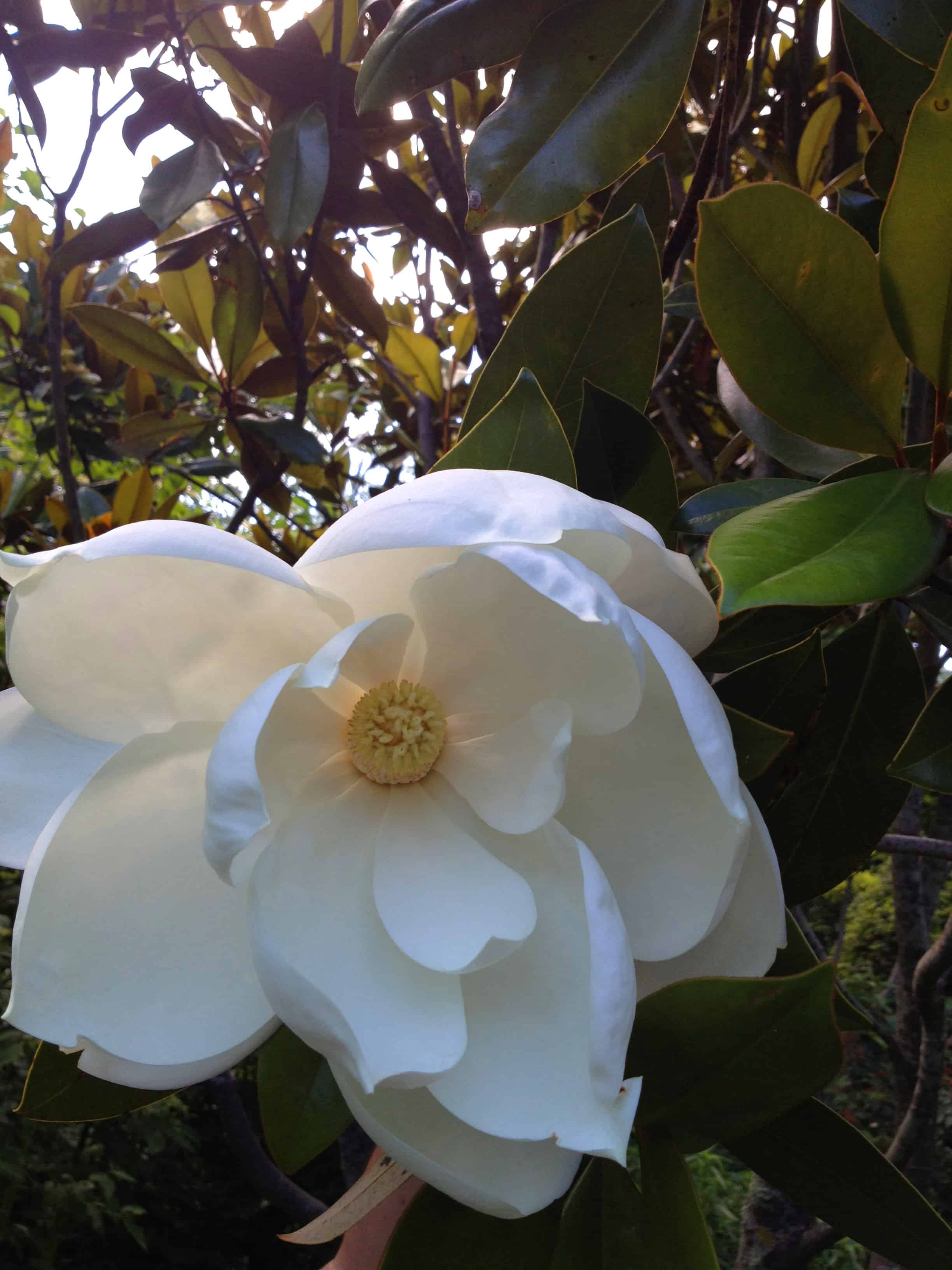

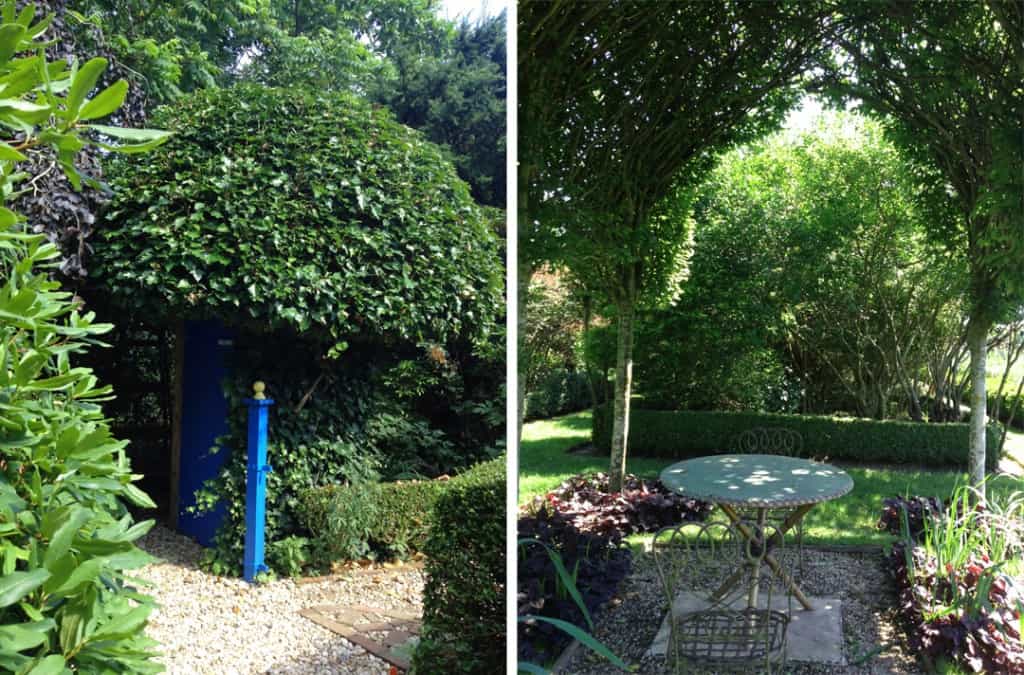
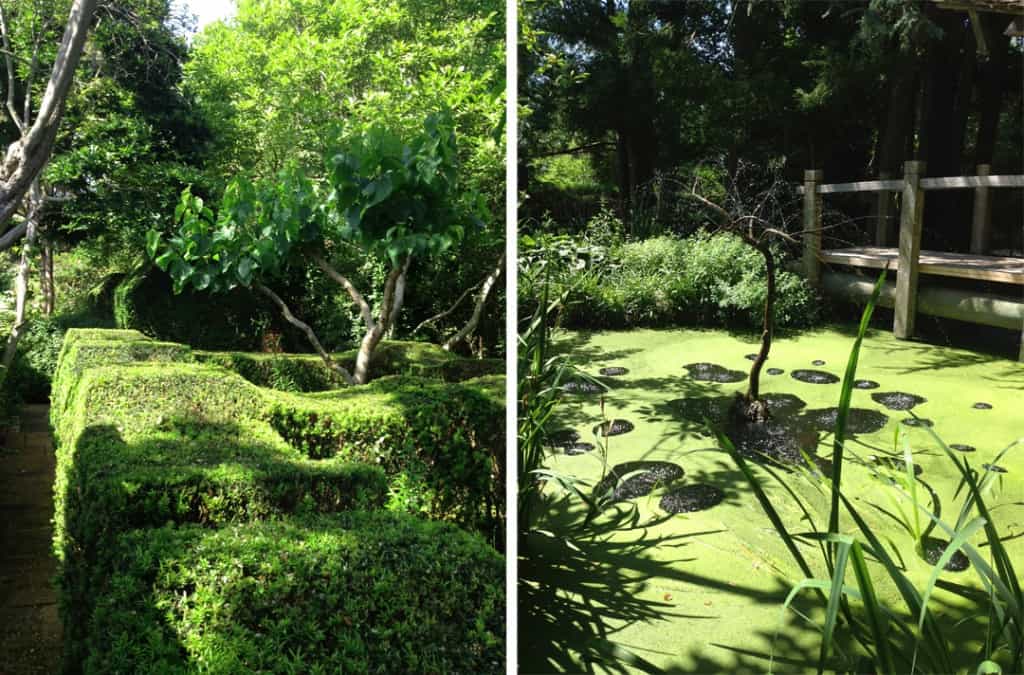
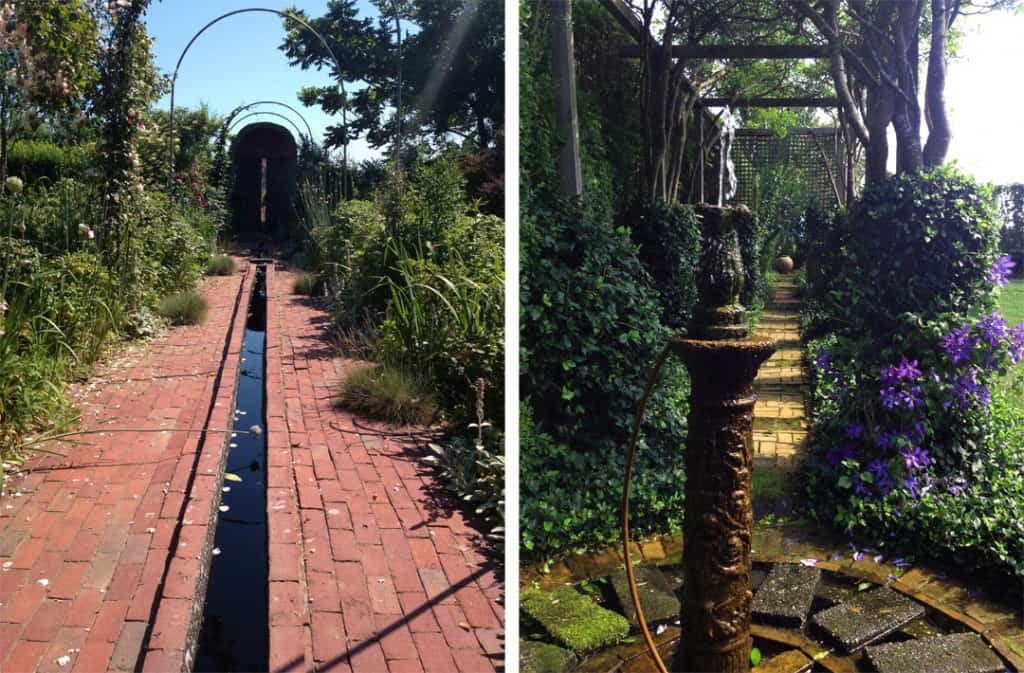

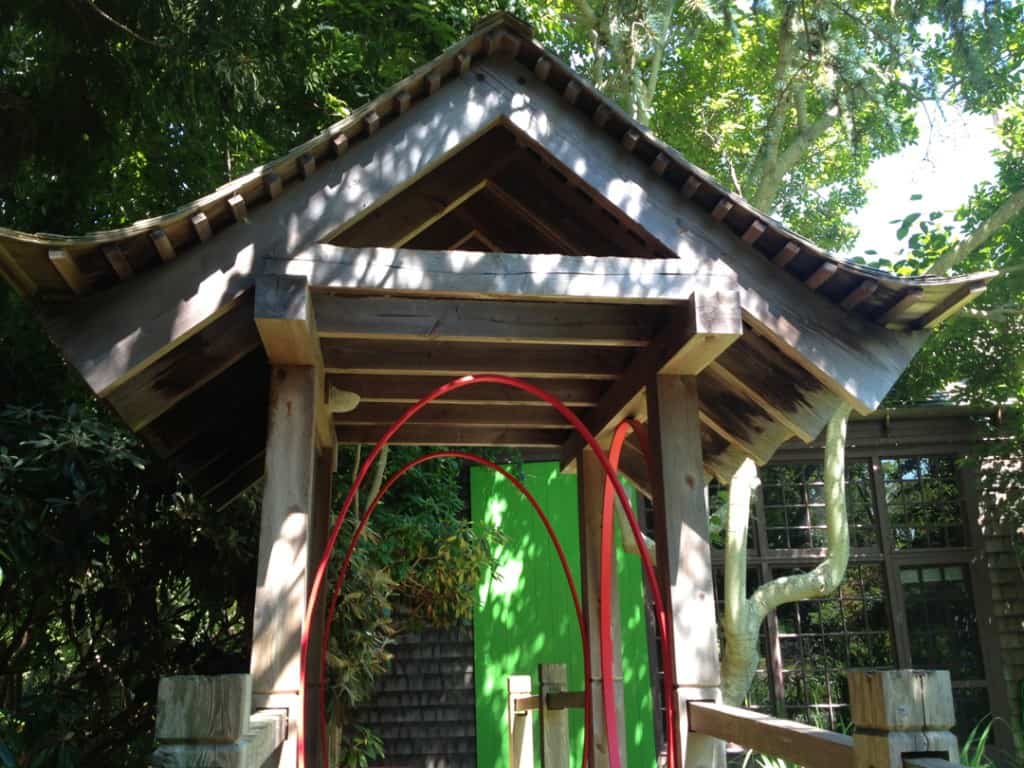





Anna what a wonderful post! Just wonderful! Thank you, and I will forward to Executive Director Alejandro if you have not already! But surely they have seen it by now. It was so nice to meet you, and I love your blog! Frances